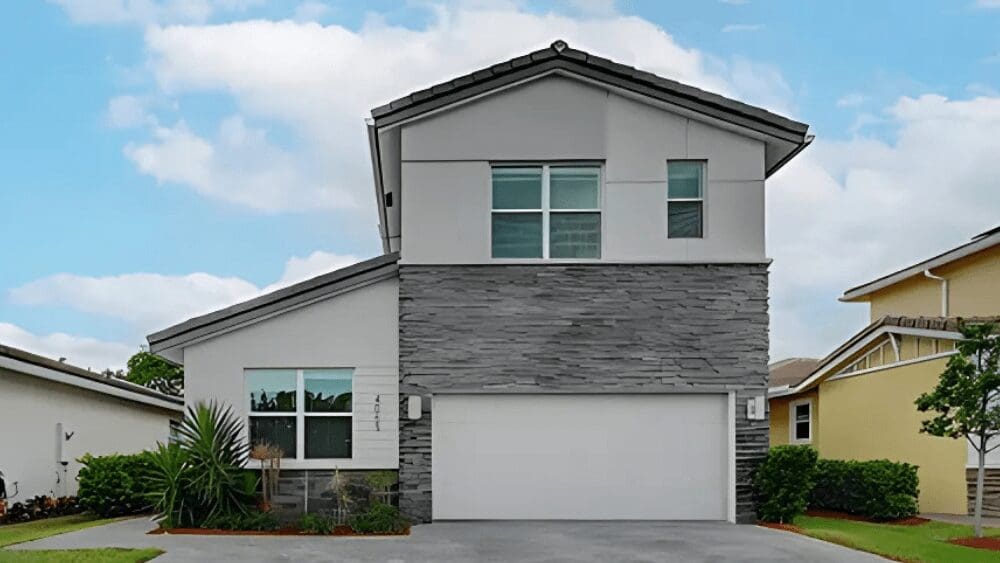
Real estate investment can be a lucrative means of cash flow for many homebuyers. But getting started in the world of property investments isn’t as easy as sticking a “for rent” sign in the front yard. It takes serious planning to protect your asset and turn a profit. Jason Mancuso, a top real estate agent in Rochester, New York, knows this from experience. He works with investors from around the globe, and he’s also an investor himself. When working with clients, he reminds them that investing must be viewed differently than personal homebuying. He says: “It’s business. It’s numbers. It either makes sense or it doesn’t.” So with an investment property in hand, what are the next steps to make those numbers make sense? Using national data and expert advice, we’ll walk you through the initial business stages to get your real estate investment performing well. Ideally, you had the chance to walk through your property prior to making an offer and were able to make budget projections with eyes wide open. But in some situations, that’s not possible. You might have purchased outside of your area, doing the deal sight-unseen. Or the final walkthrough may have revealed unanticipated issues that put a few question marks on your to-do list. Regardless of the specifics, now’s the time to make sure you have solid plans in place to get your rental property ready for the market. Some questions to get you started may include: Investment properties can run the gamut from being pretty turnkey to needing a complete gut job. No matter where yours falls in that range, be sure to make remodeling decisions based more on numbers and less on emotions. Remember, this isn’t your forever home; it’s your investment home. Remodeling projects should increase the value of your home, either from a tenant perspective or from an equity perspective. Or both! Projects that may increase value for the tenant might include fresh paint, spruced-up landscaping, low-flow toilets, or energy-efficient appliances. These types of things add an attractiveness to your property that may not be measured in dollars but could increase your potential pool of tenants. Increasing the value of the home in terms of equity is easier to quantify. This 2020 cost-versus-value study by Remodeling Magazine may help guide some of your decisions. Kitchen and bath remodels remain strong value-added projects, with a 77.6% and 64% return on investment, respectively. Other high-value remodeling projects include garage door replacements (94.5% return), window replacements (72.3% return), and roof replacements (62.8% return). One important way to add value from both a tenant and an equity perspective is through room additions. Keep in mind, that doesn’t necessarily mean space additions. Is there a way to turn an office or loft into a bedroom? Could you turn a half bath into a full bath? These changes pay off in a big way without the hassle of breaking ground. In some markets, renters pay significantly more for additional bedrooms. For example, in Illinois, three-bedroom units bring in an average of $1,062 more than two-bedroom units each month. Mancuso says that added value compounds when you resell the property. “We’ve now got a bigger market to sell to, because you’ve got three bedrooms compared to two or less.” A study by the National Association of Realtors confirms that buyers typically purchase a three-bedroom, two-bathroom home. When looking at remodeling finishes, take extra wear-and-tear into account. You want your cabinetry, countertops, flooring, and fixtures to stand the test of time in order to avoid continual replacement costs. Instead of hardwood flooring, consider vinyl plank or laminate, which is friendlier to pets and easier to clean. Make sure that kitchen cabinet construction is made of plywood and not particle board, which can deteriorate much faster. Rather than cheaper laminate countertops, it might be best to spend extra for a much more durable quartz or granite. But don’t overspend on fixtures — basic ceiling lights and faucets will do the trick in most rental markets! While it may be tempting to save money and do all of the renovations yourself, remember that the clock is ticking. The longer you wait to place a tenant, the more your carrying and vacancy costs grow. (Expenses like mortgage payments, utilities, and homeowners’ insurance continue with or without your rental income.) Keep in mind that many long-term renters will be looking to make a move at the first of the month. That means you’ll want to have most projects done and ready for marketing (photos and showings) by at least the middle of the prior month, or earlier if possible. Selecting a good tenant takes time, after all! For some investors, peak rental seasons play a major role in income production as well. If you’ve got a short-term vacation rental, you’ll want to be able to market in time for the booking season, which is likely several months before the actual vacation season. Those who plan to rent to students will want to be ready by June or July, a likely house-hunting window for the next school year’s renters. Once your property is ready for tenants, it’s time to get the word out! First, you’ll need photos that highlight your property’s best features. Consider hiring a professional photographer. Yes, there’s a cost involved, but that one set of photos can be used again when you have to re-list the property. Next, you’ll need to set your conditions. Will you allow pets? What type and size of pet? Is smoking or vaping okay? Can your tenants paint the interior? How do you feel about subleases? How much will you require for a security deposit? Make these decisions now so you can market more effectively. Finally, set the rental price. Keep both your budget and your target market in mind. Pricing a property too high could limit your applicants; pricing it too low may cause applicants to wonder what’s wrong with the place. As a general rule of thumb, rental prices are usually set around 1% of the property’s value. Therefore, a $250,000 home could theoretically bring in around $2,500 per month in rent. This general rule does not hold true in every market, however. Your real estate agent can help you look at comparable prices in your specific area. With all your information ready, it’s time to list the property! Popular websites like Trulia, HotPads, and ForRent.com can make your property searchable for potential tenants. Also, some property management apps will syndicate listings for you, which makes your marketing efforts go further. (See property management app and software examples below.) Hopefully, your marketing efforts will yield you several tenant applicants to choose from. Good tenants are the key to rental property profitability, so take care to screen the applicants carefully before signing the lease. Selecting the right tenant is more important than just going with the first tenant. At the very minimum, be sure to run a background check and a credit check. Set a minimum requirement for credit scores, make sure the tenant has not had prior evictions, and note any criminal record data. Online screening services make this process easy, but not all screening companies are created equal. Before choosing a screening service, be sure that the credit data is backed by one of the three major bureaus: Equifax, Experian, or TransUnion. You’ll also want to look into the background data sourcing. Most screening companies will pull information from national judiciary records, but finding one that checks local court records is rare. Remember, it’s always possible to dig deeper by directly calling the local courts in your area (or the applicant’s prior area, if necessary). Screening reports usually run between $25 to $50, and most allow you to choose either landlord or applicant payment options. See our property management section below to research apps that include viable screening options. For a screening-only service, you may want to consider RentPrep or SmartMove. Mancuso emphasizes the need to go beyond the numbers and reports, as well. “Talk with employers,” he says. “Talk with past landlords. Get references. Take the steps to actually make contact with them.” People can make themselves look really good on paper. Take the time to get a more complete picture of each applicant, and you may save yourself some headaches down the road. As much as we’d all love to believe that real estate investments are “passive” income, no rental properties are entirely hands-off. Eventually, a tenant is going to pay late, a refrigerator is going to stop working, or an HOA board is going to lodge a complaint. What’s your plan to deal with issues that arise at your property? For landlords with a demanding day job, hiring a property management company might be the best way to go. Property managers will handle everything — for a fee, of course. Most property managers will charge a percentage of rent for their monthly services, usually between 4% and 12%. Some may charge a flat fee instead. Additional property management fees may or may not include tenant placement fees, vacancy fees, and eviction fees. Be sure to read your property management contract carefully to determine which services are covered in the monthly fee and which services will require an additional payment. Also, make sure that the monthly charge is for rent collected rather than rent due; otherwise, the property manager will still be owed payment while the property is empty. Some landlords choose to self-manage, or DIY manage, their investments. For those who have a flexible schedule and live near their rental property, self-management may be the most cost-effective option. DIY managers should develop a list of trusted plumbers, contractors, electricians, and other service professionals to call in case of emergencies. Landlords who choose DIY management may want to consider using apps or software to streamline their information and systems. Some property management apps help with basic things like listings, applications, screenings, and rent collection. TurboTenant, Cozy, and Avail are good examples, which are also free to the landlord. As you continue to grow your real estate investment business, you may want to scale up your property management software to include additional functions, such as accounting, maintenance, communication, and website features. RentRedi, Buildium, and Yardi Breeze all require monthly fees, but their services are much more comprehensive. If you financed your investment property, you’ve probably already obtained insurance. Double-check with your insurance agent to make sure that your property is properly insured with “landlord insurance.” Landlord insurance costs about 20% more than regular homeowner’s insurance, but the coverage accounts for others using your property on a regular basis. Long-term tenants should also get renter’s insurance, since their property is not covered under your landlord insurance policy. Renter’s insurance usually costs around $15 per month. As you’re working through your investment budget, make sure you have plenty in reserves for emergencies and vacancies. Though some investors may stick to a three-month reserve rule, additional factors might create a case for keeping more set aside. Lenders may want to see up to six months of expenses in reserves (including mortgage payments, taxes, insurance, and HOA dues) before extending a mortgage loan to you for your investment property. And properties with looming capital expenses on the horizon (such as an aging roof, or systemic plumbing or electrical problems) may require a more robust reserve account. Don’t think of reserves as eating into your profit; think of them as protecting your investment. After a tenant is placed and all your systems are running smoothly, don’t fall into the “passive income” trap! Communicate regularly with your tenant. Check in every couple of months to ask about maintenance needs. Schedule a six-month walkthrough, if your lease allows (with proper notice). Mancuso says communication is important between owners and property managers as well. “You should be pretty hands-on with your property manager. Make sure you build that rapport and know what’s going on.” Remember that at the end of the day, your real estate investment is a business. Protect it! Help it profit! Keep those remodeling, rental, and reserve numbers focused on the bottom line, and watch your investment grow.1. Scope the project
2. Plan rental-friendly remodeling
Increase the value
Incorporate rugged design
3. Create a timeline
4. Market the property
5. Select tenants
6. Think through property management
Property management companies
DIY property management
7. Get insurance
8. Keep plenty of reserves
9. Be proactive about communication



